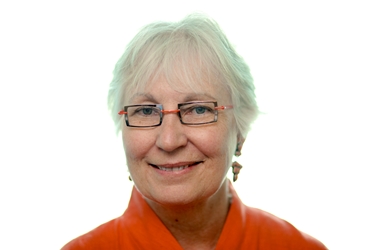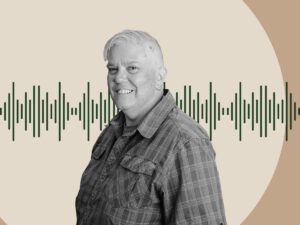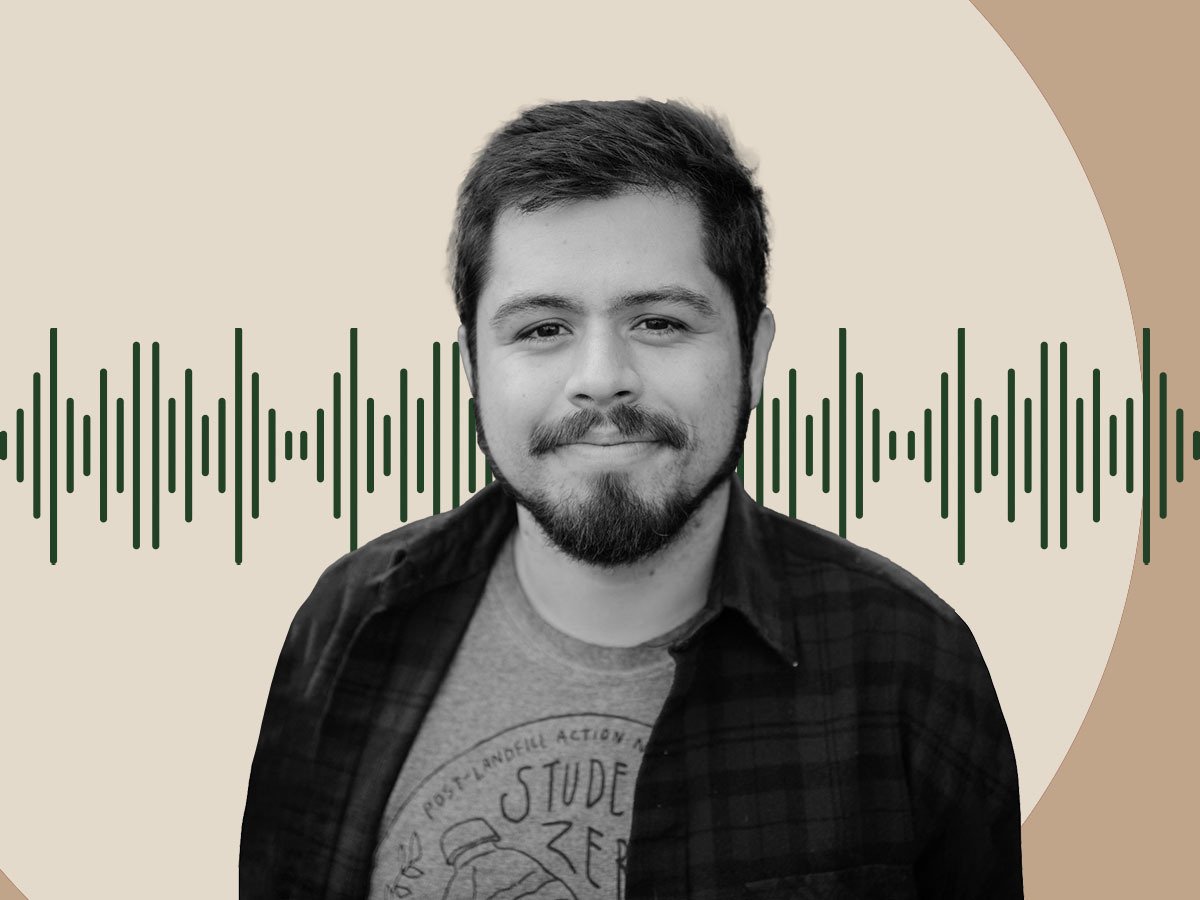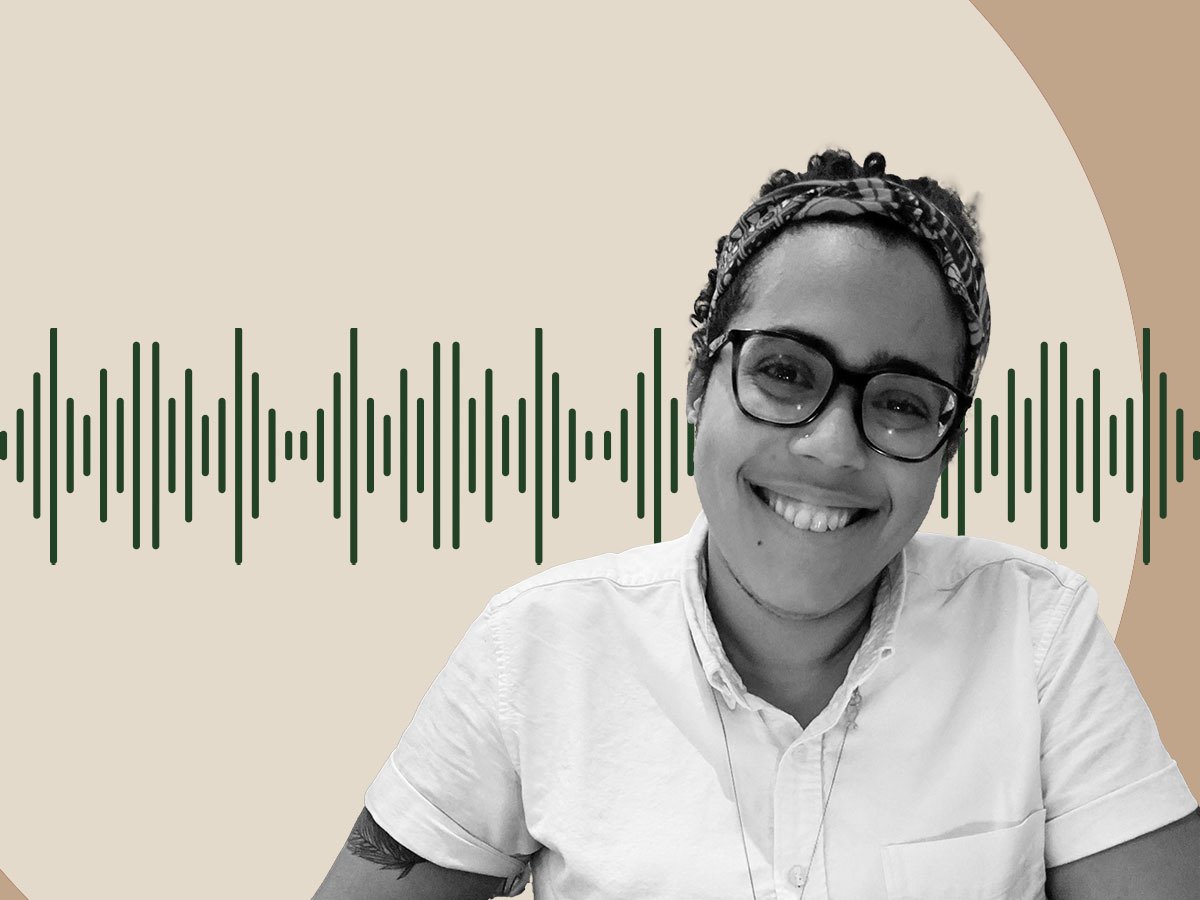
Today, it was announced that the FrameWorks Institute has been named a recipient of the 2015 MacArthur Award for Creative and Effective Institutions. Each year, the MACEI award is granted to help a number of exemplary nonprofit institutions continue “creative work” found to have exceptional value for society. Along with the FrameWorks Institute, the other grant recipients include: ASILEGAL (Asistencia Legal por los Derechos Humanos) in Mexico City, Mexico; Firelight Media in New York City; Forest Trends in Washington, D.C.; the Human Rights Center at the University of California-Berkeley School of Law; iCivics in Washington, D.C.; the National Institute on Money in State Politics in Helena, Montana; and the Roosevelt Institute Campus Network in New York City.
FrameWorks was founded 16 years ago by Susan Nall Bales.The core of its work is on how advocacy communications can be improved through the use of Strategic Frame Analysis. Bales is a veteran communications strategist and issues campaigner with more than 30 years of experience researching, designing, and implementing campaigns on high-profile social issues. The $1 million award comes at a pivotal time for FrameWorks, as the organization prepares to expand access to their groundbreaking and incredibly useful work.
Bales, interviewed below by Ruth McCambridge, is the author of the NPQ classic “Wanted: Master Storytellers” and has an upcoming article on how to frame work on inequality in the next issue of NPQ’s print journal. Watch for it!
Susan Nall Bales: FrameWorks’ mission for 15 years has been to deliver the quality research that nonprofit organizations need to effectively address social issues and to help them understand and use that research—which is really two parts of our mission: One is to actually do the research that is necessary to inform public engagement about an issue, and the second is to teach nonprofits how to use that research.
Ruth McCambridge: How important is the way you frame an issue?
SNB: I’ve argued for 20 years that communications for nonprofits should be a front-end activity. It’s not about dissemination. It’s about understanding the way that people perceive your issue, and that needs to be part and parcel of your work on an issue right from the beginning.
You have two sides of a coin. You have the actual social analysis of what the problem is and what would improve conditions, but you also have the way that people perceive that problem and what they perceive the solutions to be—and those things are joined at the hip. FrameWorks tries to understand the social analysis the experts want to put forward and then to figure out what are the impediments in people’s minds that prevent them from engaging with the issue, understanding it, and wanting to resolve it.
RM: You and I have talked before about the power of a dominant narrative, and that is one of the things that distracts people from even the best-supported arguments. Can you talk a little bit about what people doing social justice work might be fighting as they’re going about trying to persuade people that there are other ways to look at issues in front of them?
SNB: To start with, I think that the nonprofit sector has made enormous progress in bringing social science into the way that it thinks about social problems. We do better social analysis, we look at evidence with much greater scrutiny, we weigh policy options, I think, with much more rigor. But communications as a social science has not enjoyed that same progress, and so I think that what we have is a black hole in our strategic toolkit that would allow us to see what communications is good for, and how to use it. Unfortunately, the consequence of that is that we are losing battles unnecessarily. I don’t mind losing, but I really, really don’t like to lose when we don’t have to.
RM: Can you talk about some of the issues specifically that you think continue to revert to form, despite evidence to the contrary?
SNB: Well, I think many issues do. I mean, it’s just part of the way we think. We know from the work of people like Daniel Kahneman and from others who study how we think that unless our automatic thinking is disrupted, unless it doesn’t prove helpful in making our ordinary day go well, we are going to default to these dominant ways of thinking…these folk models of how the world works. And, you can’t just steer them with a little slogan or a tagline, which I would say continues to be the way that we in the nonprofit sector think about communication. You have to disrupt the dominant frame and replace it with a better model of how the world works.
RM: Can you give an example of that in your recent work?
SNB: One example would be our work on education, where, over time, 10 foundations came to us and wanted to work on different parts of a new education story. But all of them had very different parts of that that they were funding. You know, some were into afterschool programs, some were in assessment, some were in equity. I think one of the innovations that FrameWorks has brought forward is to bring those people together around a core story. It isn’t just one little piece of the elephant that you’re trying to put your hand on, but a new story about how education works—what it is, what it’s good for, what derails its outcomes, and what would improve it.
We worked with those 10 foundations and created a new story. It has a plotline. It has the equivalent of “it was a dark and stormy night.” It sets the stage. It has characters. It has mechanisms that are operative in the universe. It has bad guys in the narrative. It follows a narrative outline, but it isn’t the old story: One kid, highly motivated by a caring teacher, pulls himself up by his bootstraps and becomes Bill Gates. That is the narrative we tend to tell ourselves. Tinkering around with that narrative is not going to get you anywhere, but substituting a different story—and, we would say, an empirically tested story—can be demonstrated to get people to a different place where they appreciate that the system needs to be changed if you want better outcomes for most kids.
RM: What would be the replacement story? I mean, that dominant narrative that you and I have talked about before—the basic “bootstraps” narrative that is deeply embedded in everybody’s psyche in this country, and even in the psyches of people who come to this country. What do you try to replace that with, and why?
SNB: The first thing I would say is that we have new tools that explain this, which will be up on our website by the time you post this story, and I can send you links to that. So, there is both a message memo and toolkit that explain this new story. But, basically what the story does is it first makes it clear why education is a public good that society needs in order to move forward. The distinction is between education as an individual product that one acquires as a consumer. It sounds very simple when you think about it, but that assertion of publicness is almost invisible in media coverage of education and, to some extent, in nonprofit groups’ own messaging.
RM: We’ve talked previously about the idea of needing to repeat the new story and stick to it over time. Can you talk a little bit about that as a function of communication and how important it is and how it occurs?
SNB: What’s really important is telling a complete story over time and using that story, that same story, to explain multiple policy objectives. What we are doing wrong is thinking we have to have a different story for every policy ask. What a core story does is to create a way of understanding how an issue works that would then allow you to see why multiple policy prescriptions would address that reality. There isn’t enough time or money in the world to advance every policy ask with a new story, and people can’t absorb that. So, I think that’s a fundamental mistake that we are making.
RM: I will hear people working on the same issue, portraying that issue in many different ways, and there’s a different assumption base behind each of the ways that it’s portrayed.
SNB: Yes. You know, I would say that there’s a corollary to this, Ruth, which is that we think that we’re branding, not framing. And, so, we think that often that it’s childcare against children’s oral health. Well, that’s ridiculous. If you understood what children need, you would be able to see why quality childcare is important and why a child needs access to regular dental care. You want to move towards the story that lifts all boats, instead of thinking that nonprofit issues are like Coke and Pepsi and if mine moves forward, yours has to fail. That’s a bad conceptual orientation.
RM: Going back a bit, when you talk about empirically testing communications, what does that entail?
SNB: Here is where I really feel that we have not made the progress that we should as a sector. First, communications is seen as an art, not a science, and if it’s an art then my idea of how to engage people is just as good as yours. If it’s a science, then when you have your opinion, I should be able to say, “Prove to me that that’s going to work for me.” So, FrameWorks is definitely in the empirical camp.
In the science camp, we think the artistry comes once you kind of know what the message is. Then, you want creative people to be able to implement that, to execute it in multiple ways. But right now, what you’ve got is that all research is considered equal. One person’s two focus groups are the same as another group’s serious experimental survey. And, the lack of rigor in that work and in our reflection on that work is killing us. So, I think that we, as a sector, need to step back and look at how we view communications as an integral part of policy advocacy and how we require rigor in the execution of communications research.
RM: It really is a huge idea, and in some ways revolutionary for the sector. But, it adheres in some ways to some of the trends, which is to look at research, at least to inform what you’re doing, to depend a little bit more on data to help you design the way you’re going to go about doing something. In communications, what I feel like I see a lot is that people actually do that in their fundraising, but they do not necessarily bother to do that in their advocacy.
SNB: Yeah, we’re often called in to talk to people’s direct mail consultant. The direct mail formula is directly counter to what social scientists say should be an issue narrative. So, they’re writing things that are “send money or this x will die.” It doesn’t matter whether it’s manatees or child abuse victims. We’ve actually worked with some direct mail folks and said, you know, a better story would be a story that explains the underlying mechanism—so, why are critters in the oceans being pushed closer to the coastlines where they’re being caught, and, so, they become more vulnerable with what’s going on there, and, then, what are some of the solutions that would prevent them from being caught in nets, like bycatch.
So, there’s an example, and the direct mail people are so happy to have a different story. You know, they’ll say to us, oh my God, I couldn’t do that dead shark story one more time. And, when you do that, when you change that direct mail narrative, you’re also educating your core constituency as issue advocates. So, this notion that people that give you money are different from the people who vote for your issues seems to me quite quizzical.
RM: So, you’re saying that at every opportunity, you have to drive that issue story home.
SNB: Yes, and wouldn’t you want to figure out ways to bring your cash constituencies into your issue advocacy?
RM: Right.
SNB: I think we don’t spend enough time on that; we simply assume that the old formulas are getting us where we want to go. I think that what FrameWorks has been about is questioning old formulas and then systematically undertaking research to find out whether they work or not.
RM: You’re a watcher of social movements. I’m wondering if there’s any examples of seizing a narrative in a frame that you’ve seen recently that’s been impressive to you?
Sign up for our free newsletters
Subscribe to NPQ's newsletters to have our top stories delivered directly to your inbox.
By signing up, you agree to our privacy policy and terms of use, and to receive messages from NPQ and our partners.
SNB: Let me say two things. There is a scholarship of social movement. Again, it is often ignored. So, I would say that I would not be overstating it to say that I am in meetings with people who profess to understand how social movements work and to be social movement builders whose advice is at odds with what we know about the theory and practice of social movements. So, again, I think we’re losing unnecessarily because we’re not really paying attention to a good literature, to a good social science literature.
I thought that the campaign in the UK to keep Scotland part of the United Kingdom was phenomenal. If you watched the whole first part of the campaign and Cameron’s statements, they were all about, “Don’t do this, you’ll die, you’ll starve.” And, that just brought up all this Scottish resistance from Braveheart onward. We’re Scots; we’re used to this. We’ll eat haggis, you know.
RM: Right.
SNB: Talk about playing into a default frame. I mean it was just, that was ridiculous. I am told that some very smart communicators figured out this was not going well and changed the final weeks of that campaign to be about, “We need you! You are part of us. This would be a sundering of our mutual relationship.” And they did lots of things that were highly symbolic of that. I think they hung hearts, for instance. That was a really masterful wielding of a value of interdependence. Look at how close that was, and it didn’t go the way that many people thought it would have. I think it would have been far more problematic for Great Britain if that sea change in the framing had not occurred. I mean, I thought that was brilliant.
Certainly, the one that is closest to home is gay marriage, where we’ve seen a complete change in the way that that is thought about. And, of course the go-to place for a change is tobacco, which has evolved from being thought of as a personal vice to being thought of as a defective product, with many campaigners who very conscientiously made that frame change.
RM: When you have a very diverse field that is approaching an issue in multiple ways, and—I don’t know why, I always think about the issue of poverty—how do you approach something which really has multiple, to use your word, defective frames being used around it, and how do you begin to overwhelm that noise to try to counter that?
SNB: That’s a really good question. In the way that we teach advocates and experts to think about what communications is good for, we use the analogy of a swamp—that people aren’t just blank receptacles. They have lots of things in there that they have pulled over time from their experiences, from their mediated experiences, from things they know, their folk economics, etc., and so you’re wading into a swamp, and there are alligators in that swamp that are big dominant ideas that are going to eat your incoming information every time, and there are some orchids in the swamp—things that people are trying to grow, but there’s not a lot of nurturance to help them grow that.
We diagram that swamp, and we show them, “Here is this cluster of ideas. These ideas, if you step in them, they are going to pull you under; here’s another cluster of ideas.” And, then, our work as we do our prescriptive work—the metaphors, values, and other frame elements that we develop—is tested to overcome those parts of the swamp, so that now you have tools that help you navigate around those things and help you overcome them. That’s where I think lots of people talk about “strategic communications.” I don’t think there’s a lot of strategy in most communications. What we’ve tried to do is really a tool-to-task fit. You see the task, which is you have to overcome a pattern of thinking. You have ways to avoid it, and you have tools that get you around it.
Here’s an example. We know that people think about fairness, and we know that advocates evoke fairness. Fairness, in the American psyche, can mean “us versus them,” somebody is getting something I’m not. It can mean, “somebody is not trying hard enough and so they’re being given something.” And so when you evoke fairness between individuals, or fairness between groups, you’re getting some of this swampy thinking that’s not very helpful to you.
RM: Interesting.
SNB: Over time, what FrameWorks has done is to experiment with a different kind of fairness, which is fairness across places, which is that fairness is not being equally distributed and the distribution mechanism is faulty. Some kids in some parts of the city aren’t getting the educational benefits, while others are. And so the problem is not that one group should give theirs to the other one; the problem is that the mechanism needs to be repaired so that fairness is being equally distributed. This has been the kind of “ZIP code message”—that where you’re born, the part of town you’re born in, shouldn’t be your fate. That’s a much more powerful way to get people to see fairness and to overcome that swampy thinking.
RM: What do you think about the idea that there are a limited number of stories in the universe that we all know and that are familiar and that we glom to? Is that in fact something that we need to pay attention to, that the ways we craft our stories have to be familiar and clear enough that people can familiarly glom onto them?
SNB: It’s a really, really good question, Ruth. Let me try. It is true that we know a limited number of stories, and that those stories are greatly influenced by the cultures in which we live. The story that feels so good to us is the story that we hear every day. We’re attracted to these familiar stories, the contours of which we know. Those are culturally specific, so in this culture, you would say the triumphant individual who pulls himself up from his bootstraps is the way that individualism as a value is inculcated in us in our society. But, I think what many scholars would say is that you can’t tell people that those stories aren’t true; you just reinforce them. You just remind people of that story.
But, you can build new slots in that story. So, you can’t say—this is an example from Roger Schank, an artificial intelligence scholar, who said, “You can’t tell people that Cinderella didn’t have mice.” Now, in your head, you’ve got Cinderella and mice, right? But, what you could do is say, “Did you know that Cinderella had another stepsister?” So, you can take an empty slot in a story and build it out. You can take a narrative structure that has a setting, characters, a bad guy and a good guy, and you can turn that into a story about systems, so that the bad guy is not teachers unions in the education story—which just torches all public engagement; whether you like them or not, that’s the end of the discussion about education reform—but you can make it that the charging stations that kids need to be able to learn in this society are spotty for some kids. They’re not there in every community, and they’re not there with the regularity that we need, and so fixing those is what we need to turn our attention to. That’s a story about fixing things, and Americans are very pragmatic and practical. So, there is a way to tell stories along one part of the cultural grain but not to deliver back to people the same old story that they know.
If I have a hobbyhorse, I would say it is the way that people talk about resonance. “Does a story resonate with your ‘audience’?” Which I also don’t like, but, well, what resonates is going to be the dominant story. What you want to do is figure out something that breaks that story, like the unknown stepsister, and move people to rethink the story and to come out with a different outcome. So, when I hear people saying, “It has to resonate,” I think, “Oh my God, we’re dead in the water.” On kids’ issues, we’re just going to be telling them that parents are responsible, and people think that because they don’t have any other way of thinking about how kids work.
I think one of the problems here is the lack of interdisciplinarity. People who are advocating for social problems, advocating for solutions to social problems, people who are scientists, and social scientists who study those social problems live in their own niches and are not routinely in contact with people who are communication scientists. Even the communication scientists are narrowly niched. If you look at anybody who’s doing communications, if you’re lucky, they’re following one academic discipline. They’re psychologists, or they’re linguists, or they’re public health people.
What FrameWorks has done, and what I’m most proud of, is to create a transdisciplinary organization. We duke it out over whether we are living to a sociological imagination, whether we are showing people that structures affect people’s outcomes, whether their methods are better from political science than anthropology to get at a particular question. So, what FrameWorks has been is one large inquiry into, “How do you get the best theories and the best methods aligned to give you answers to the practical questions that communicators need answers to?” And, I don’t think anybody can do it through one or two disciplines.
The reason it’s hard, you know…so, when I first started FrameWorks, I had this question of why nobody else had done it before. It seemed to me a kind of logical thing to do, and I was interested in an effort in the mid-’30s that the Rockefeller Foundation did. They created a communications roundtable. This is really at the dawn of political psychology and understandings about propaganda, and we had this amazing array of the major social scientists in this country. I went up to Pocantico [Hills, New York], which is where the papers live, and I went through the box of minutes from those meetings.
The problem was that everyone fought each other from their disciplinary perspective. World War II broke out, and half of these people went into the Office of War Information. They used to pick up Margaret Mead and give her a ride into work so that they could pick her brain because they needed some anthropology. And, then, after the war, they all go back to academic institutions and try to create the same interdisciplinary conversations they had in the Office of War Information, and they are eaten alive by academic institutions.
So, what we have done at FrameWorks is to try to create that outside of the academy, recognizing that it wasn’t likely to happen inside. In our little humble way—you know, of roughly 20 people—is to incentivize interdisciplinary study to reward people who are able to get together and, “See we’ve taken this method and we’ve added to it this perspective and when we apply this to immigration, we’re getting different answers.” I don’t think you can get good message recommendations without doing that. So, that’s my long, nerdy exposition.
RM: Yeah, it really kind of takes my breath away, because I couldn’t agree with you more, but I do think that it is counterintuitive for a lot of Americans. Many people’s idea of communications is to stay on point, stay narrow, get from the beginning to the end.
SNB: Oh, so, on that point, you raised that earlier. There’s actually a report on our website called “Don’t Stay on Message.” It’s on immigration for MacArthur. We tested whether actually staying on message when you’re attacked is effective, or whether pivoting to a second message is better and, if so, which one. What we were able to show is that if you stayed on message, you lost ground. If you pivoted to a second message, you were able to counter your opposition. So, staying on message is not always the right thing to do—and this gets to that idea of a “poor story.” It’s not just that you’re taking that hammer of communications and putting it on the same nail over and over and over again; it’s that you’re taking the hammer of communications and you have a whole set of nails that are configured like a story, and you know which one to hammer in response to which place in people’s minds they’re going to.
RM: This is the communication strategy of all of our dreams, and you’re one organization with 20 people. So, now what?
SNB: We have two directions that we’re moving that we think respond to that. The first is FrameWorks Academy. A couple of years ago, with funding from MacArthur and the Kellogg Foundation, we began to invest in a state-of-the art online course that would help people understand how metaphors work, how values work, how communications works, what’s a good theory of change if that’s how you think communications should work. We created a course called “Framing Fundamentals,” and it’s now up on our website, and I hope that I don’t have to give the same talk over and over again that we’ve given for the last 15 years and that we can make it available to people that may not actually ever come in contact with us. We are now creating another set of courses that build upon that that are issues, but they’re topical. So, we’ve got one up that is on skills and learning education. There will be another one soon on immigration. There will be another one soon on human services.
You can subscribe to that, and you sit at your desk and say, “I have no idea what these people are talking about with metaphor. I’m going to take this metaphor lesson, and then I’m going to look at what they’re saying about human services, about how to frame that.” You have the ability to really learn what we have learned over those years in a very kind of interactive way.
The second thing we’ve done is that I think we have to get ahead of the next generation of nonprofit leaders. I think we have to build their communications capacity in the places where they are learning how to think about their jobs. Additionally, we are now beginning to partner with a number of academic institutions—the University of the South is one, and we expect the University of Alberta to be another—to help develop a curriculum that is then used by people that are training up to become the next generation of nonprofit leaders. They’ll have some framing chops under their belts, to mix a metaphor, and they’ll understand, when they see a problem like a measles immunization backlash, for example, that four focus groups is probably not the way to attack that, that you need to understand where people are. You need a medical anthropologist or two to come in and help you understand how people are conceptualizing immunizations, and how you would begin to work with them to get them to see it in a different way.
When we see the political posturing on it, the thing that is tragic is that people have so little understanding of how immunizations work that they’re confused about whether those solutions that are being put forward are good or bad ones, and that’s when you have this perceptual problem. The whole public health approach to community interdependence is being questioned, and I think is losing ground, because people do not have a vivid way of thinking about what that means.
RM: The MacArthur award comes, it seems, at an extremely good time for you, because it sounds to me like you’re able and ready to launch with a much more broadly available approach right now. Am I reading this right?
SNB: I think that is exactly right. We’ve spent 15 years experimenting and refining methods and throwing things out and saying, “No, we don’t want to do it this way” or “We’re not going to pay attention to this scholarship because we don’t think it’s helpful; we’re going to pay attention to this, or we’re going to bring it into our work.” I feel like we’re in a very good place. We still continue to experiment and innovate, but we have a strong theoretical base.
We feel confident that we have developed a tool in Strategic Frame Analysis that is useful, is predictive, is adaptable to multiple issues, and that can be brought forward to pretty much any type of policy issue that presents itself. Now, we don’t do anything that is individual behaviors; we’re not interested in how to get your kid to sleep through the night, but we are interested in the degree to which noise in your community, if left unaddressed by the community, affects your kid’s sleep. So, we’re interested in those issues of how what surrounds you, shapes you, and I feel that we have a strong platform and we’re now ready to help other people use that, to become conversational in the use of it, and to ask better questions about how good communications research could improve their outreach, their public engagement.
I have been in, I would say, half a dozen meetings over the last couple of months about how to communicate on social issues, where if I closed my eyes, I would have thought it was 1985. What tends to happen is that everyone has an opinion, everyone—and there’s a great quote from David O. Sears:
“Everyone is an expert on public opinion; after all he is a member of the public and he knows how he feels and what he thinks about an issue. Or does he? There is a great deal about the way in which people borrow opinions, or reach down into their experience for guidance which is, even for the individual himself, out of sight. […] We rarely think of our opinions as being formed by group memberships, forgotten childhood experiences, party labels, friendship patterns. […] Yet, even if people were endowed with perfect self-knowledge, they might not understand what others were doing or thinking.”—Robert E. Lane and David O. Sears, Public Opinion, 1964
So because there is no compass, there’s no ruler to allow you to sort what is good advice from bad advice. We just end up in this big lump, and then we end up generating taglines. These are high-level meetings. I’m talking about people who have the power to bring many high-level communications folks together, and that is the task—to come up with a tagline. So, clearly we are not conceptualizing communications at the level we need to make progress.













